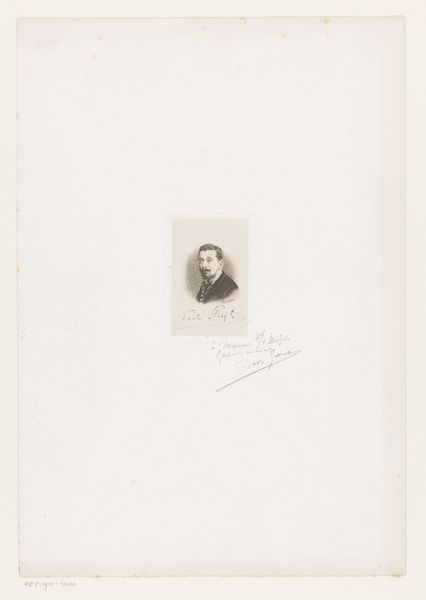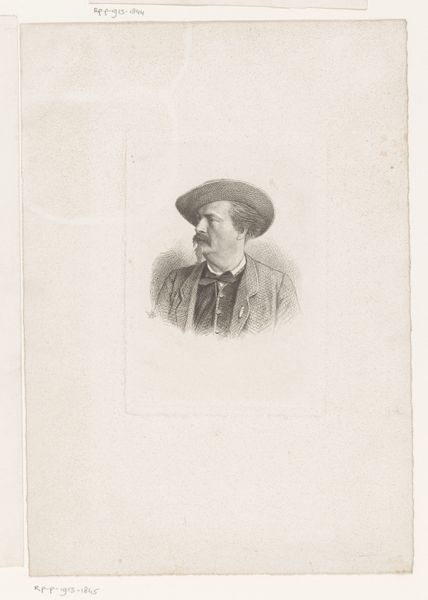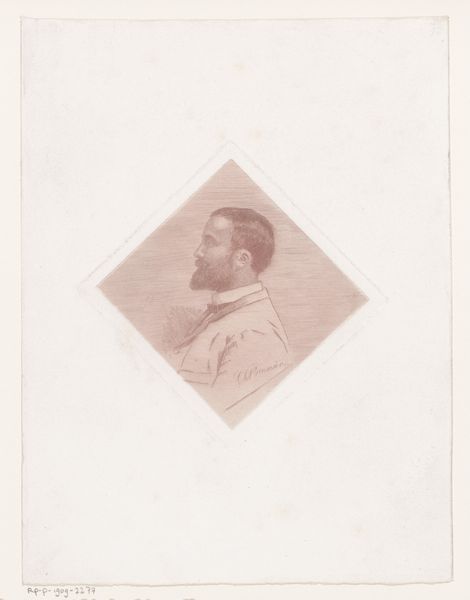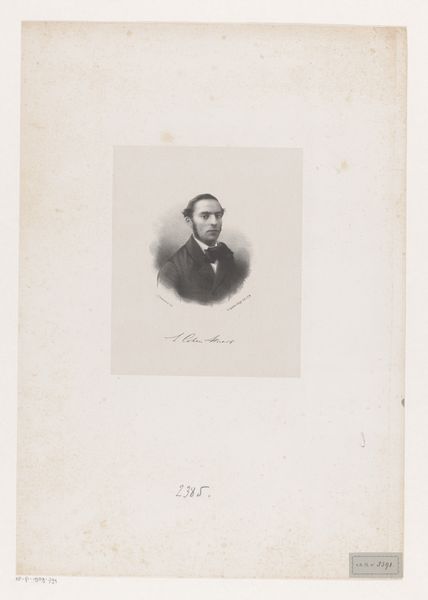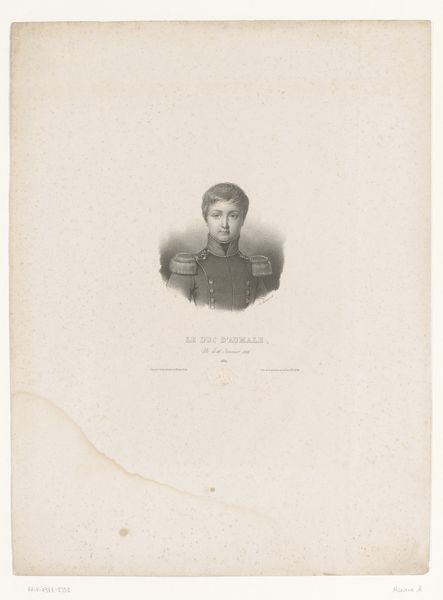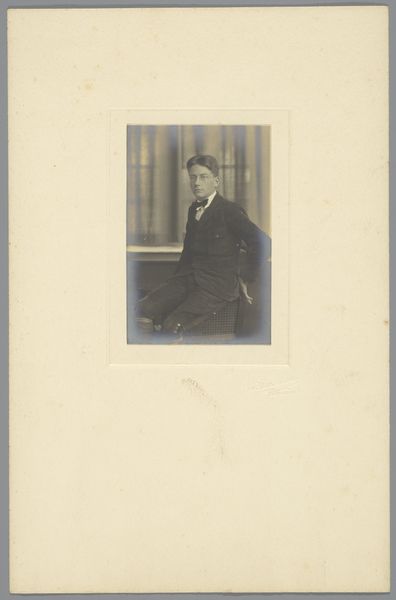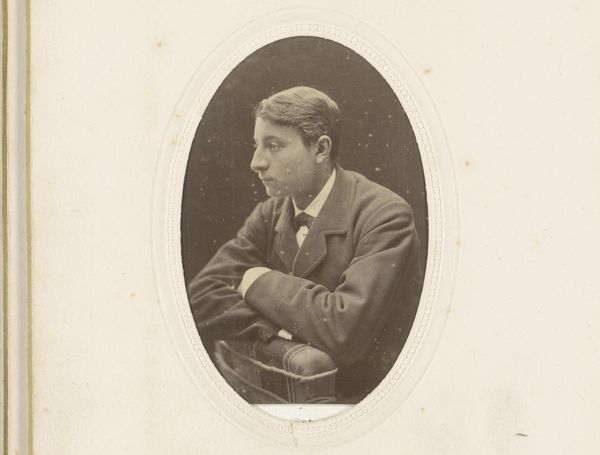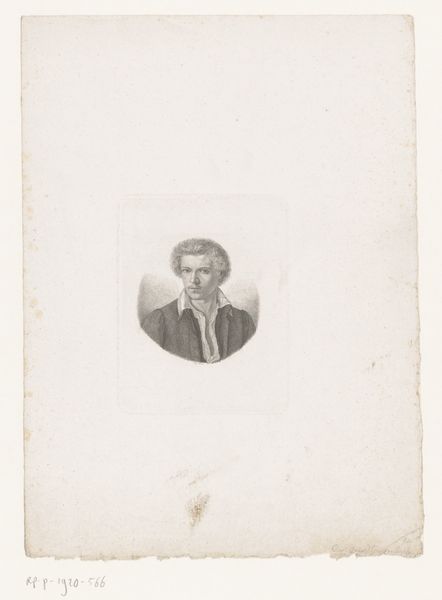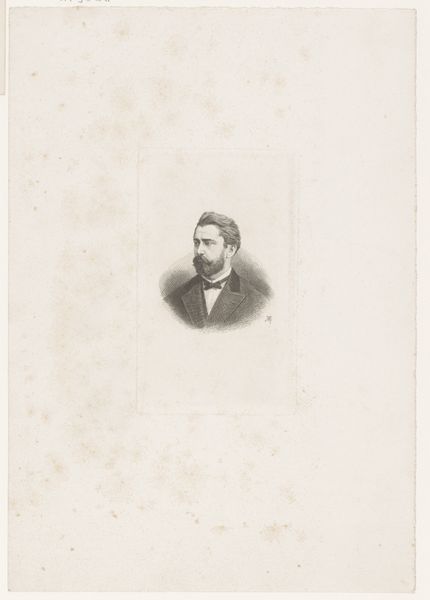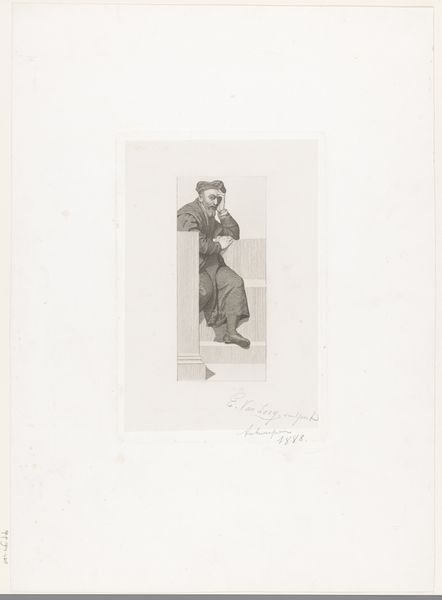
drawing, pencil
#
portrait
#
pencil drawn
#
drawing
#
pencil drawing
#
pencil
#
academic-art
#
realism
Dimensions: height 139 mm, width 101 mm
Copyright: Rijks Museum: Open Domain
Alphonse Descaves created this portrait of Ernest Alexandre Honoré Coquelin using a lithographic crayon, and then transferred it to a printing stone. Look closely, and you’ll see the subtle gradations of tone made possible by the crayon, giving the image depth and form. This was then chemically fixed onto the stone, which would have been painstakingly hand-ground to a perfectly smooth surface. The image could then be printed many times. Lithography was a relatively new technology in Descaves’ time, but one that democratized image-making. Suddenly, you could get many copies of an image – a real boon for portraiture, which previously had been the province of the wealthy. This image sits at the intersection of art and industry. Consider that Descaves would likely have had to work in a commercial print shop, collaborating with other workers to achieve the final result. He was participating in a wider economy of mechanical reproduction. This portrait makes us consider the social context of art production. It’s not just about individual genius, but collective effort too.
Comments
No comments
Be the first to comment and join the conversation on the ultimate creative platform.

